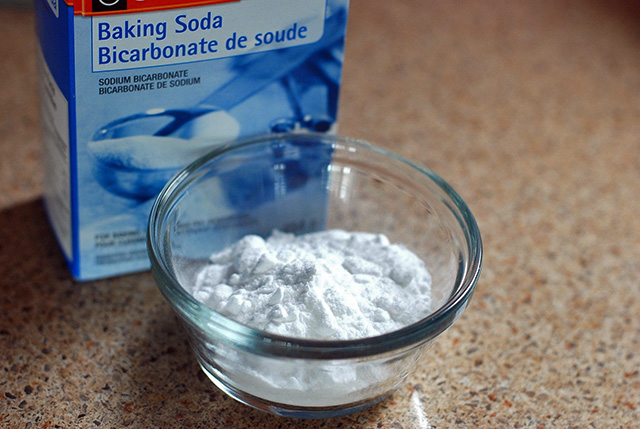In recent times the use of ergogenic aids has been a topic of much debate in the world of sport. Sodium bicarbonate, an unbanned, readily available, and inexpensive product, has become popular as an aid to performance in events that predominantly rely on anaerobic glycolysis as the energy source. There is much research to support its ergogenic effects.
For short duration maximal exercise, the accumulation of acid within the muscle cells as the critical limiting factor. This role of acid accumulation in causing fatigue during maximal exercise has lead researchers to hypothesize that performance may be enhanced by changes in buffering capacity and acid-base balance of the blood. The ingestion of one such buffer, sodium bicarbonate, has been shown to enhance exercise performance.
Sodium bicarbonate has become a popular ergogenic aid as it is readily available and inexpensive (it also known as baking soda, and can be bought at a supermarket). It has become popular as an aid to performance in high-intensity events which predominantly rely on anaerobic glycolysis as the energy source. Exercises that exhaust the subject in one to seven minutes have been commonly found to be improved after bicarbonate ingestion, such as 400m to 1500m runs. This time frame corresponds to exercises in which fatigue can be mainly due to the accumulation of lactic acid.
How It Works
Buffers help to maintain the pH of bodily compartments at their optimal level, often while large amounts of acid or base are being produced by chemical reactions or are being added to the system. An acid-base buffer is a solution of two or more chemical components, which includes a conjugate acid-base pair, that is capable of resisting large changes in pH when either an acid or base is added. Sodium bicarbonate, or NaHCO 3, when ingested, can increase the blood pH and provide a buffer for the lactic acidosis of exercise, and therefore can delay the onset of fatigue.
How to use
Ingestion of sodium bicarbonate in doses ranging from 0.14 to 0.4 g. kg-1 has been able to produce an enhancement in performance. Generally, doses of 0.2 g. kg-1 or greater are required to improve performance, although higher doses have shown an increased incidence of side effects. The dose should be taken 60–90 minutes before exercise.
 sodium bicarbonate, otherwise known as baking soda
sodium bicarbonate, otherwise known as baking soda Side Effects
Acute side effects of bicarbonate include nausea and diarrhea. Anyone considering taking sodium bicarbonate for competition should do some trial runs to assess their susceptibility to these side effects, and adjust the dose appropriately. Another side effect is elevated urine pH, due to the renal compensation for increased blood bicarbonate. There are also possible health dangers with prolonged use.
Is it Illegal?
Sodium bicarbonate is a legal supplement, though as bicarbonate loading falls under the general IOC definition of doping, the practice may be considered for banning. If banned, the testing of urine pH may be a possible method of detecting the use of bicarbonate.
Other Buffers
The ingestion of bicarbonate by athletes is usually via capsule or dissolved in a flavored fluid, which is the most economical and simple methods. In addition to the use of bicarbonate, several other substances and methods have been used to achieve the desired blood alkalosis, such as tris buffer infusion, sodium citrate ingestion, ventilatory manipulation and dietary manipulation. Beta-Alanine is another supplement that helps with muscle buffering.
Reference
- Hadzic, M., Eckstein, M. L., & Schugardt, M. (2019). The Impact of Sodium Bicarbonate on Performance in Response to Exercise Duration in Athletes: A Systematic Review. Journal of sports science & medicine, 18(2), 271–281.
Related Pages
- Guide to Athletic Supplements
- Research paper: The ergogenic effect of sodium bicarbonate ingestion on trained male 400 and 800 metre runners
- Beta-Alanine Supplementation — helps with muscle buffering.
- Go Shopping in the Supplement Store
- About Muscle Fatigue


 Current Events
Current Events